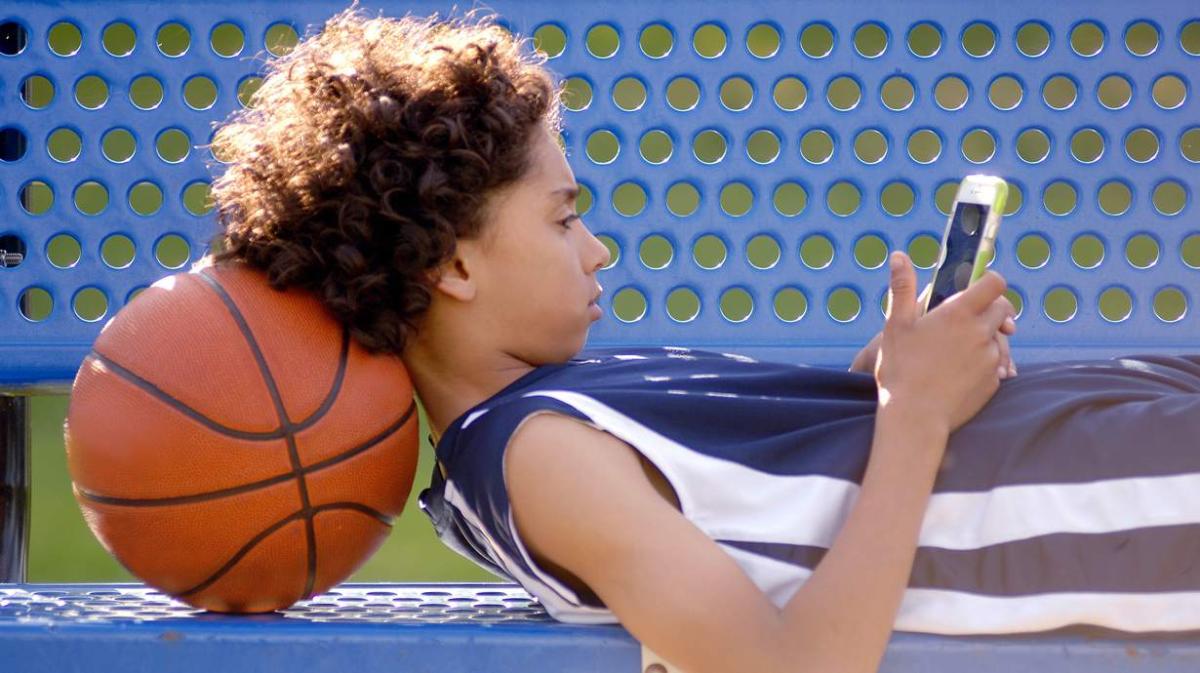What Is “Shared Responsibility” When It Comes to Keeping Children Safe Online?
More parents and caregivers see their child’s online safety as a “shared responsibility” with tech companies. Here’s what that means for you and your family.

By: Yolanda Parks
Angie Porow is a marketing strategist and the mother of a very tech-savvy 9-year-old son. Early on, she knew it was imperative that she and her husband explain to their son the rules associated with having a safe and enjoyable online experience.
“We learned to coach him and empower him not to watch something that wasn’t appropriate, and how to recognize what’s not appropriate, because we just can’t catch everything,” Porow says. “We had to help him understand you’re going to see these things, but it doesn’t mean it’s necessarily what we believe in.”
Like Porow, a recent study shows that most parents take on the responsibility of keeping kids safe online. The study—sponsored by Verizon for the Family Online Safety Institute (FOSI) and conducted by media research group Magid—revealed that “57% of baby boomer parents, 43% of Gen X parents and 30% of millennial parents consider themselves to own the most responsibility for keeping their kids’ digital lives safe.”
However, a growing number of younger parents and caregivers also see their child’s online safety as a “shared responsibility.” But what is this concept of shared digital responsibility, and how can it be used within the family?
What is shared digital responsibility?
“The idea of shared responsibility centers around the health and digital well-being of the child,” says Dr. Elizabeth Milovidov, a digital parenting coach, e-safety consultant and mother of two. “The parents and caregivers allow their children to engage in the opportunities that internet technology and social media have to offer, while finding ways to reduce the risks.”
Those risks include online threats or inappropriate material, but Dr. Milovidov thinks these incidents can serve as a powerful teaching moment for children and their parents. It’s important that parents and children have open discussions about safety and risks of various devices, apps and platforms, as well as what kids are watching online and their online interactions with others.
“Kids will see [online] risks, and sometimes they will have those risks come to them. But by keeping them in a bubble, we’re not equipping them with strategies needed to deal with those risks. We want children to be resilient” Dr. Milovidov says.
Every family is unique. When using technology, are you instilling guidelines that work for your family, your expectations and your values?
For parents and caregivers, implementing shared digital responsibility begins with having a shared dialogue with their children, especially teens and tweens, about technology that will be used as a family.
Dr. Milovidov suggests these questions to ask as a family:
-
How is this device, platform or app contributing to our family’s digital well-being?
-
How can we use this device, platform or app in a way that provides us with the best opportunities and experiences?
-
How are we going to speak with each other if there’s an issue?
The parent’s responsibility: Create a feeling of trust with your kids
Creating trust and a safe space in which children can talk to parents and caregivers about any uncomfortable online encounters is critical to keeping them safe and building this idea of shared digital responsibility.
This increased trust can often lead to a new sense of independence, with tweens and teens pushing the limitations that are in place to protect their online welfare.
The FOSI study suggests that ways to create a “journey towards trust” include:
-
Establishing house rules along with implementing online safety tools
-
Allowing tweens and teens more access to technology as they become more skilled and proficient, and trustworthy
-
Increasing tweens and teens freedom in their digital life as they continue to make good online decisions
Tech’s responsibility
Although parents and caregivers interviewed for the FOSI report see themselves as the main advocate for their child’s digital safety, they felt technology companies share in the obligation of helping to ensure young children, tweens and teens have a secure and creative online experience through effective parental controls apps and tools.
“Parents wish [tech] companies would understand the power they have to create a new generation of problem solvers and creative thinkers. That is the role that tech can have. I don’t need them to parent me. I don’t need them to parent my child. But I do need them to be responsible for how technology is going to groom and grow our kids,” Porow says.
One way Porow and her husband monitor how much time their son spends online is through the Verizon Smart Family app. When Smart Family is paired with Smart Family Companion app on their child’s phone, they can see how much time their son is spending on YouTube or Roblox or who he’s texting and for how long.
The work ahead
Bringing all the participants to the table to share in the responsibility of keeping young children, tweens and teens safe online remains the goal, and there’s a lot of work to be done.
“There’s no quick fix,” Dr. Milovidov says. “There’s not going to be a button we can push to handle all these different things.”
Dr. Milovidov suggests that the most important question parents and caregivers can ask their child to see if they’re sharing a safe digital partnership with them is simply this: “Will you come to me when there is an issue, no matter what it is?”
So, with continued work and commitment, perhaps the idea of shared digital responsibility and partnership is only achievable on a family-by-family basis right now.
Learn how Smart Family’s parental controls can help you keep your children safe online.
About the author:
Yolanda Parks is Executive Director, Content Standards and Client Strategy at Magid. She is responsible for developing recommendations on advertising and content standards, online safety and Diversity, Equity and Inclusion issues.

